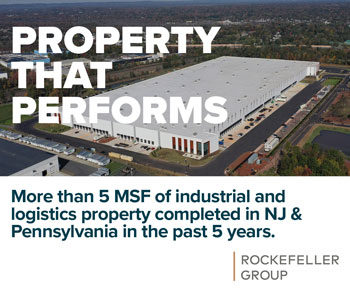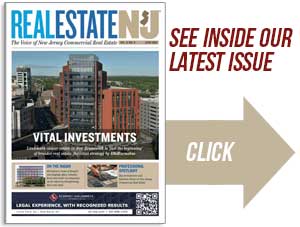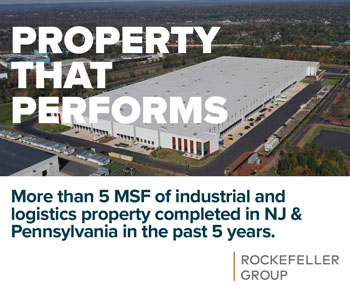Barclay Place, a new 56-unit affordable and supportive housing project in Paterson, opened last summer with the help of the state’s Hospital Partnership Subsidy Program. — Courtesy: New Jersey Housing and Mortgage Finance Agency
By Joshua Burd
A new 3,000-square-foot health and wellness hub has opened in Paterson, not inside of a hospital or medical office space but at the base of a 56-unit apartment building on Barclay Street.
It’s the first of what will be several projects under a state program aimed at creating affordable and supportive housing near health care institutions, providing shelter and other services that residents might otherwise seek at nearby St. Joseph’s University Medical Center.

“If you’re trying to juggle 10 different doctors with multiple health conditions, that can be all-consuming,” said Melanie Walter, executive director of the New Jersey Housing and Mortgage Finance Agency. “But when you can walk down the hallway, all of a sudden, you can focus on the rest of your life. And the hospitals will be saving money, because a lot of these individuals would have just been popping in and out of the ER all the time. They had the ability to screen for that when they were helping select candidates.”
Walter was among those on hand last summer to mark the opening of what’s known as Barclay Place, which was built with the help of HMFA’s Hospital Partnership Subsidy Program. Leasing is also underway at a second project to be completed under the program — a 78-unit building near Newark’s University Hospital — while a developer in Camden has broken ground on a 47-unit building in partnership with Virtua Health.
With the Hospital Partnership Subsidy Program now bearing fruit, thanks to a combined $14.73 million that HMFA has pledged to date, the agency is gearing up to expand the program further. It’s now fielding interest from prospective applicants in Trenton, Atlantic City and other communities, with the dual mission of spurring new affordable housing and improving access to health care.
“In a lot of ways, with this facility, they’re just getting closer to the residents in the community where their care is already being provided,” said Sam Chapin, a managing director with LMXD, referring to University Hospital in Newark. The firm partnered with Type A Projects and MSquared to develop the nearby apartment building under the HMFA program, at West Market Street and Littleton Avenue, where the hospital is fitting out an 8,000-square-foot, ground-floor clinic that will serve residents of the adjacent Georgia King Village and others in the area.
“The same is true of the housing components,” Chapin added. “I think the early-occupancy units that we’ve been filling are Newark residents who obviously know the area and I think are appreciative of the high-quality housing there.”
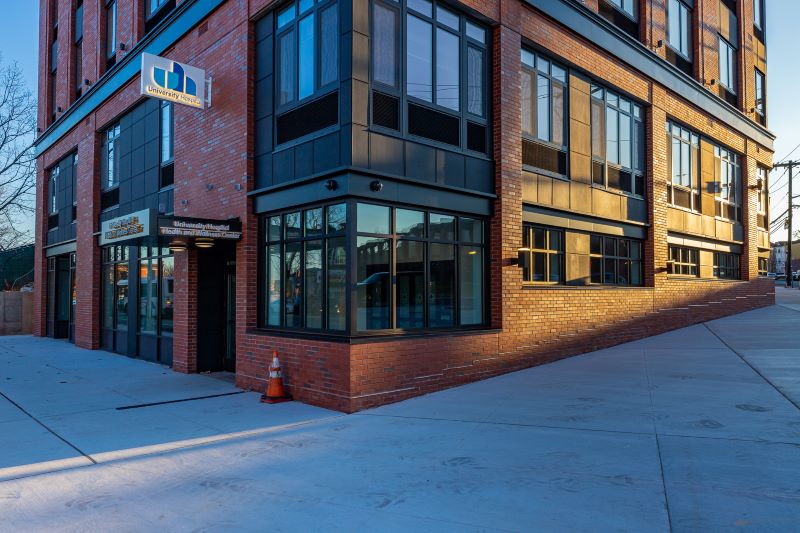
HMFA launched the subsidy program in 2018 and quickly garnered interest among developers and hospitals, only to see projects stall during the COVID-19 crisis. With several now taking shape, the agency currently has another $22 million available for future partnerships, offering low-interest subsidy loans that builders and health care providers can combine with other state and federal funding sources.
The new developments in Paterson and Newark have become a welcome proof of concept. Chapin said the latter, which occupies a former surface parking lot at Georgia King Village, is 50 percent leased after welcoming its first residents late last year, including formerly homeless individuals that were referred by University Hospital. It’s also provided an infusion of new activity to the city’s Fairmount neighborhood and West Ward, which will only grow when the hospital opens its new clinic in the coming months.
Such a service is critical, Walter said, as it is at Barclay Place in Paterson, where St. Joseph’s is “providing a medical resource in the community that isn’t the ER,” supporting families in the area while reducing the burden on ambulances.
“That’s a pretty universal need,” Walter said, especially for senior populations and individuals with conditions such as multiple sclerosis. Prospective applicants are also discussing how to expand the on-site services to other types of at-risk residents, she noted, making for “really interesting concepts that are starting to crop up now that people are seeing the success of the first couple of buildings.”
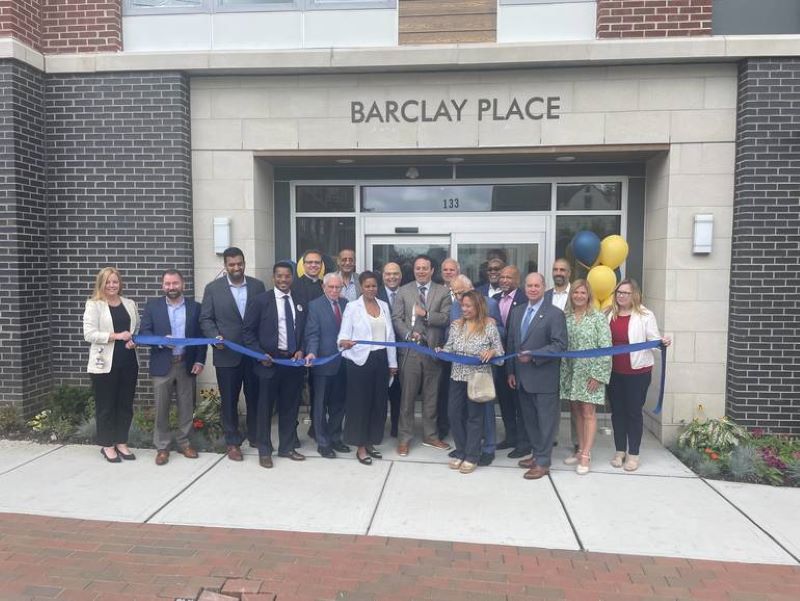
HMFA is also seeing the benefits of projects that navigated the pandemic and were forced to adapt their design. Walter noted that Barclay Place, developed by New Jersey Community Development Corp. and designed by Thriven Design, has study rooms with WiFi for students who need to learn from home, as well as a rooftop patio that provides a safe, outdoor space for residents with or without disabilities.
The building is already having a ripple effect, Walter added, noting that St. Joseph’s is weighing plans to build additional housing nearby. It’s also building a playground on land that it owns across the street, seeking to accommodate the families that have flocked to Barclay Place.
“One of the best things that we saw with the Paterson property was just seeing the parents,” Walter said, adding: “That was why the playground idea came about because … we have a building full of families, which wasn’t really what they were originally contemplating.”
HMFA also expects to see the Newark property attract families, and it’s likely to be a recurring theme as the Hospital Partnership Subsidy Program spreads to other cities and towns.
“I think the big challenge is going to be getting to places where it’s more of a suburban setting and making sure you have the transit access to the population in need,” Walter said. But she’s been encouraged by the response from institutions in places such as Lakewood, adding that she expects to find partners among the state’s largest hospital networks.
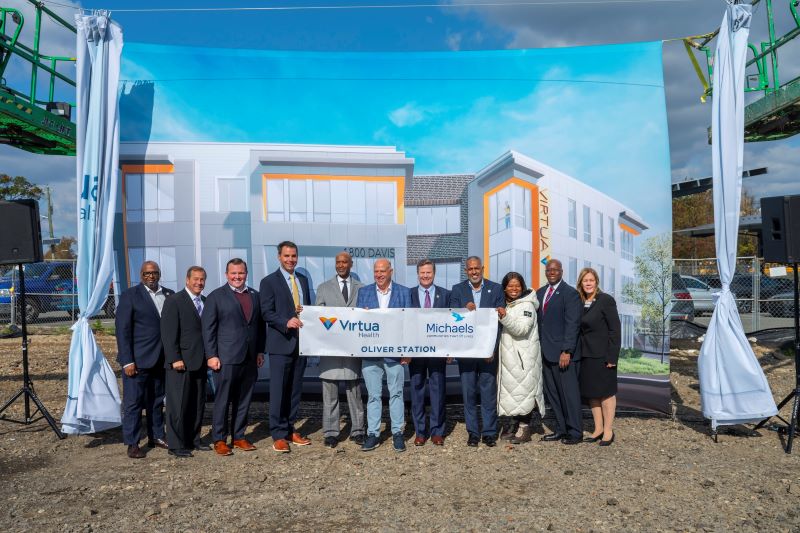
On a broader level, she noted that the Robert Wood Johnson Foundation has funded grants to housing finance agencies in a half-dozen other states to help develop similar programs, using the HMFA framework as a model. That’s likely no surprise for a policy that developers say is distinctive in its approach.
“The unique thing about the New Jersey model is that it’s a program that’s originating from the state housing agency, so it’s making the pool of funds available specifically for this type of product,” said Jill Crawford, a partner with Type A Projects, LMXD’s and MSquared’s partner in Newark. “Whereas, elsewhere, I think you’re cobbling together financing for different pieces of the project and bringing it together.
“Here, the agency itself is actually being proactive about bringing together these two different components, which makes it a lot easier and a lot more attractive for developers to take advantage of.”



